Postpartum hemorrhage (PPH) is defined as a cumulative blood loss greater than or equal to 1,000 mL of blood loss accompanied by signs or symptoms of hypovolemia within 24 hours after the birth process, regardless of the route of delivery. Nevertheless, a blood loss greater than 500 mL in a vaginal delivery should be considered abnormal (American College of Obstetricians and Gynecologists [ACOG], 2017).
Postpartum hemorrhage is the fifth leading cause of maternal mortality in the United States and causes approximately 11-12% of maternal deaths. It is the leading cause of maternal morbidity and mortality globally (Nathan, 2019).
Primary postpartum hemorrhage may occur within the first 24 hours after birth, while secondary postpartum hemorrhage occurs more than 24 hours and up to 12 weeks after delivery. The four main causes for postpartum hemorrhage are the four T’s: tone (uterine atony), trauma (lacerations, hematomas, uterine inversion or rupture), tissue (retained placental fragments), and thrombin (disseminated intravascular coagulation).
Nursing Care Plans and Management
The primary role of the nurse in caring for patients with postpartum hemorrhage is to assess and intervene early or during a hemorrhage to help the client regain her strength and prevent complications. Early recognition and treatment of PPH are critical to care management. Data such as the amount of bleeding, the condition of the uterus, checking the maternal vital signs, and observing for signs of shock would play a vital role in the care of the patient with hemorrhage.
Nursing Problem Priorities
The following are the nursing priorities for patients with postpartum hemorrhage:
- Control and manage bleeding
- Administer medications, such as uterotonics
- Manage pain and provide emotional support
- Monitor fluid balance
- Ensure proper wound care and hygiene
- Infection control
Nursing Assessment
Assess for the following subjective and objective data:
- Excessive or heavy vaginal bleeding that may soak through pads or clothing
- Large blood clots or passage of tissue from the vagina
- Hypotension, tachycardia
- Pallor
- Feeling lightheaded or dizzy
- Shortness of breath
- Abdominal pain or discomfort
- Decreased urine output
- Signs of shock, such as cold and clammy skin, weak pulse, and altered mental status
Nursing Diagnosis
Following a thorough assessment, a nursing diagnosis is formulated to specifically address the challenges associated with postpartum hemorrhage based on the nurse’s clinical judgment and understanding of the patient’s unique health condition. While nursing diagnoses serve as a framework for organizing care, their usefulness may vary in different clinical situations. In real-life clinical settings, it is important to note that the use of specific nursing diagnostic labels may not be as prominent or commonly utilized as other components of the care plan. It is ultimately the nurse’s clinical expertise and judgment that shape the care plan to meet the unique needs of each patient, prioritizing their health concerns and priorities.
Nursing Goals
Goals and expected outcomes may include:
- The client will have a balanced 24-hour intake and output.
- The client will have a lochia flow of less than one saturated perineal pad per hour.
- The client will demonstrate improvement in fluid balance as evidenced by a good capillary refill, adequate urine output, and skin turgor.
- The client will demonstrate pulse, blood pressure, urine specific gravity, and neurologic signs within expected ranges and without any respiratory complications.
- The client will demonstrate vital signs within the expected range.
- The client will exhibit laboratory values of arterial blood gases (ABGs) and hematocrit/hemoglobin within an acceptable level.
- The client will demonstrate normal hormonal functioning by adequate milk supply for lactation (as appropriate) and resumption of normal menstruation.
- The client will state an understanding of individual causative/risk factors.
- The client will display vital signs within acceptable ranges.
- The client will display lochia free from the foul odor.
- The client will exhibit laboratory values within the normal range.
- The client will identify appropriate methods to provide relief from pain.
- The client will demonstrate the use of relaxation skills and diversional activities as indicated.
- The client will verbalize relief from pain and discomfort.
- The parent will express comfort with the parenting role.
- The parent will assume responsibility for the physical and emotional well-being of the infant.
- The parent will demonstrate appropriate behaviors associated with positive attachment to the infant.
- The parent will engage in mutually satisfying interaction with the child.
- The client will identify healthy ways to deal with and express anxiety.
- The client will appear relaxed and can able to sleep appropriately.
- The client will verbalize in simple terms the pathophysiology, signs and symptoms, and implications of her disease condition.
- The client will identify behaviors and lifestyle changes to enhance recovery.
Nursing Interventions and Actions
Therapeutic interventions and nursing actions for patients with postpartum hemorrhage may include:
1. Maintaining Effective Cardiovascular Function and Preventing Shock
The body initially responds to a reduction in blood volume with increased heart and respiratory rates. These reactions increase the oxygen content of each erythrocyte and cause faster circulation of the remaining blood. Blood flow to nonessential organs gradually stops to make more blood available for vital organs, specifically the heart, and brain. Blood flow to the brain and the kidneys decreases as blood loss continues and fluid is conserved. Urine output decreases and eventually stops.
Assess and record the characteristics, amount, and site of the bleeding, including the stage of labor.
The amount of blood loss and the presence of blood clots will help determine the necessary interventions. The characteristics and quantity of blood passed can suggest excessive bleeding. For example, bright red blood is arterial and can indicate lacerations of the genital tract; meanwhile, dark red blood is likely of venous origin and may indicate superficial lacerations or varices of the birth canal. Spurts of blood with clots can indicate partial placental separation, excessive traction on the cord, and failure of the blood to clot or remain clotted may indicate coagulopathy, such as disseminated intravascular coagulation. Excessive
Count and weigh perineal pads and, if possible, preserve blood clots to be evaluated by the primary care provider.
Be certain to differentiate between saturated and used when counting perineal pads. Weighing perineal pads before and after use and then subtracting the difference is an accurate technique to measure vaginal discharge: 1 g of weight is comparable to 1 mL of blood volume. Saturation of a peripad within 15 minutes to 1 hour after delivery must be promptly reported. Always be sure to turn the client on her side when inspecting for blood loss to be certain a large amount of blood is not pooling undetected beneath her.
Assess the lochia for color, quantity, and clots.
Observing the lochia provides an estimate of the actual blood loss. Lochia rubra should be dark red. During the first few hours, the amount of lochia should be no more than one saturated perineal pad per hour. Small clots may appear in the drainage, but large clots are not normal.
Assess the location of the uterus and the degree of contractility of the uterus.
The degree of uterine contractility will measure the status of the blood loss. Uterine atony allows the blood vessels at the placenta site to bleed freely and usually massively because the muscle fibers that compress the bleeding vessels are flaccid. Large venous areas are exposed after the placenta separates from the uterine wall and bleeding is controlled by the contraction of smooth muscles in the uterus. The best safeguard against uterine atony is to palpate the client’s fundus at frequent intervals to ensure her uterus remains contracted. The fundus should be firm to compress the bleeding vessels at the placenta site.
Assess for additional risk factors for postpartum hemorrhage.
Identifying the presence of risk factors for hemorrhages such as retained placental fragments, uterine or cervical lacerations, abnormal attachments to the placental site, uterine atony, or inadequate blood coagulation will help determine the management of the situation, thus preventing further complications.
Monitor vital signs, including systolic and diastolic blood pressure, pulse, and heart rate. Check for the capillary refill and observe nail beds and mucous membranes.
Routine postpartum care involves assessing the vital signs every 15 minutes until stable. If the client has tachycardia and hypotension, suspect a considerable amount of blood loss, usually representing 25% of the client’s total blood volume, or approximately 1,500 mL or more (Brown, 2017). Tachycardia is usually the first sign of inadequate blood volume (hypovolemia). The first blood pressure change is a narrow pulse pressure (a falling systolic pressure and a rising diastolic pressure). The blood pressure may continue to fall and eventually cannot be detected.
Assess for the presence of a vulvar and vaginal hematoma.
A hematoma is a collection of blood within the tissues and may result from birth trauma, and they appear as a bulging or purplish mass. The client may also develop signs of concealed blood loss if the hematoma is large. Larger ones may require incision and drainage of the clots. The client should report signs of concealed blood loss accompanied by maternal complaints of severe pain, perineal or vaginal pressure, or inability to void. Small hematomas usually resolve without treatment or with cold application.
Measure a 24-hour intake and output. Observe for signs of voiding difficulty.
Assessment of the client’s intake and output will help determine fluid loss. Monitoring urine output is a good gauge of blood loss because the kidneys need sufficient arterial blood flow and pressure to function. If they are not producing urine, it suggests the kidneys are not obtaining adequate blood. Voiding difficulty may happen with hematomas in the upper portion of the vagina, causing pressure in the urethra.
Investigate reports of persistent perineal pain or feeling of vaginal fullness. Apply counterpressure on labial or perineal lacerations.
Hematomas often result from continued bleeding from lacerations of the birth canal. If the client reports severe pain in the perineal area or a feeling of pressure between her legs, inspect the perineal area to see if a hematoma could be causing this. Depending on the amount of blood in the tissues, the client may describe the pressure in the vulva, pelvis, or rectum. Urination may be difficult or absent due to the pressure.
Measure hemodynamic parameters, including central venous pressure (CVP) or pulmonary artery wedge pressure (PAWP) if available.
See Laboratory and Diagnostic Procedures
Assess neurologic status and observe any behavioral changes and increasing irritable episodes.
Changes in the neurologic status or behavior may serve as early signs of cerebral edema caused by fluid retention. Metabolic derangements can lead to neurological deficits such as lethargy and seizures (Usoro et al., 2021).
Monitor for signs of hypertension, tachycardia, and jugular vein distention.
Elevated blood pressure can be seen in hypervolemia, while tachycardia can represent a compensatory response to maintain perfusion in the setting of hypovolemia after hemorrhage. A distended jugular vein can be appreciated in a volume overload state (Castrera & Borhade, 2021).
Observe for signs of dyspnea—auscultate for signs of stridor, rhonchi, or moist crackles.
Symptoms of circulatory overload and respiratory difficulties may occur due to excessive fluid replacement. In the lungs, excess extravascular water impairs gas exchange, reduces pulmonary compliance, and increases the work of breathing (Hansen, 2021).
Assess and measure the client’s weight regularly.
One of the most sensitive indicators of volume status changes is body weight. It is ideal for weighing the client daily on the same scale with the same amount of clothes on to determine trends in weight changes. Client weight changes approximate a gold standard to determine the fluid status (Castrera & Borhade, 2021).
Monitor for the intake/output and urine-specific gravity if indicated and document.
With the stabilization of fluid levels, intake should approximate/equal the output. Urine-specific gravity results change inversely to output so that as kidney function improves, specific gravity readings decrease, and vice versa. In the client with glomerular spasms caused by pregnancy-induced hypertension (PIH), the output may reduce until extracellular fluids return to the general circulation.
Review the client’s BUN and creatinine levels.
See Laboratory and Diagnostic Procedures
Check the infusion rate of the fluids manually or preferably through the use of infusion pumps.
The use of infusion pumps ensures that the administration of IV fluids is accurate and within the appropriate time indicated. All infusion pumps regulate the rate of fluids in ml/hour. It ensures therapeutic effectiveness with a constant, even flow rate (Doyle & McCutcheon, 2012).
Massage the boggy uterus using one hand and place the second hand above the symphysis pubis.
Ask the client to void first before performing the massage, as an empty bladder prevents displacement of the uterus and ensures an accurate assessment of uterine tone. With a gloved hand, place one hand on the abdomen just above the symphysis pubis and another hand around the top of the fundus to anchor the lower uterine segment. Do not overly massage because the excessive stimulation to contract it will tire the uterine muscle and worsen uterine atony. Once the uterus is firmly contracted, it should be left alone but still assessed regularly.
Apply an ice pack on the hematomas if indicated.
The cold application can limit small hematomas and reduce blood flow to the area. Cold also numbs the area and makes the client more comfortable. Apply an ice pack covered with a towel to prevent thermal injury to the skin to prevent further bleeding. Larger ones may require incision and drainage of the clots.
Exercise extreme caution when performing vaginal and rectal examinations.
Vaginal and rectal examinations may increase hemorrhage if cervical, vaginal, or perineal lacerations or hematomas are present. Bimanual clot evacuation can be done as indicated. This involves cupping the fundus of the uterus with one hand while performing a vaginal examination to break down and expel any blood clots digitally. This enhances the effect of uterotonic agents on myometrial tissue by facilitating the emptying of the uterine cavity (Koh et al., 2020).
Monitor clients with placenta accreta, gestational hypertension, or abruptio placenta for signs of disseminated intravascular coagulation (DIC).
Thromboplastin released during attempts at manual removal of the placenta may result in coagulopathy as manifested by continued vaginal bleeding, epistaxis, and oozing from incisions, mucous membranes, gums, and IV sites. Retained placental fragments can also be caused by placenta accreta. Placenta accreta is a condition that occurs when blood vessels and other parts of the placenta grow too deeply into the uterine wall. Retained placental fragments can remain in the uterus after spontaneous separation of the placenta causing excessive bleeding and uterine atony. Manual exploration of the utera to remove the fragments may be necessary. Removing such deeply embedded placenta can lead to severe postpartum hemorrhage.
Maintain a nothing-by-mouth (NPO) status while assessing the client’s status.
In case of a need to repair the laceration using a general anesthetic, the client should be kept on NPO until further orders are received. This will prevent aspiration of gastric contents if the mental status is impaired and if surgical management is required.
Maintain bed rest with an elevation of the legs by 20-30° and the trunk horizontal.
Elevation of the lower extremities increases venous return, ensuring greater availability of blood to the brain and other vital organs. Bleeding may be decreased with bed rest.
Recommend the client be seated when holding the infant and change position slowly when lying down or seated.
To prevent orthostatic hypotension because it puts the client at risk of falls. Advise the client to dangle their legs first on the side of their bed after sitting up before attempting to ambulate.
Monitor the client’s hemoglobin and hematocrit levels.
See Laboratory and Diagnostic Procedures
Monitor the client’s platelet count activated partial thromboplastin time (APTT), fibrinogen, and fibrin degradation products (FDP).
See Laboratory and Diagnostic Procedures
Educate the client and significant others on identifying the signs and symptoms that need to be reported urgently.
Signs and symptoms of a possible cause of bleeding should be reported. A continuous trickling of blood can result in much or more blood loss than the dramatic bleeding associated with uterine atony. The nurse should also teach the client what to expect about changes in the lochia. Instruct the client to report the following signs of late postpartum hemorrhage: persistent bright red bleeding and return of red bleeding after it has changed to pinkish to whitish. Once at home, the client should report fever, persistent pain, or a foul-smelling vaginal discharge. They should also be taught how to palpate the fundus and what normal changes to expect.
Review the client’s blood typing and crossmatching results before blood administration.
Blood transfusion to replace blood loss with postpartum hemorrhage is often necessary. In most agencies, blood typing and crossmatching are done when a client is admitted to the labor service so blood can be rapidly crossmatched.
Administer IV fluids using an 18-gauge catheter or via a central venous line.
Initial fluid replacement with a balanced crystalloid solution is recommended (102 mL of crystalloid for every 1 mL of blood loss). One randomized controlled trial in severe PPH found a very low incidence of fibrinogen depletion and coagulopathy when clients with an estimated blood loss in the range of 1,400-2,000 mL were resuscitated with crystalloids (Muñoz et al., 2019).
Administer fresh whole blood or other blood products as indicated.
See Pharmacologic Management
Administer medications such as uterotonic drugs (e.g., oxytocin [pitocin], methylergonovine maleate [Methergine], and prostaglandin F2a [Prostin 15M].
See Pharmacologic Management
Administer antibiotics (based on culture and sensitivity of the lochia) as indicated.
See Pharmacologic Management
Insert an indwelling Foley catheter (IFC) as ordered.
Catheterization will accurately measure the renal status and perfusion concerning fluid volume. Additionally, bladder distention is an easily corrected cause of uterine atony. The nurse should catheterize the client if she cannot urinate on the toilet or in a bedpan. Most healthcare providers include an order for catheterization to prevent delaying this corrective measure. After the uterus is firm from massage, the bladder should be emptied to keep the uterus firm.
Prepare for surgical intervention if indicated
Many surgical interventions can be used, such as uterine compression sutures, selective arterial ligation, or hysterectomy (subtotal or total). These are mostly used as a last resort because these adversely affect future fertility and pregnancy. If bleeding is not resolved despite treatment with uterotonics and other available conservative interventions, invasive surgical interventions are recommended (Muñoz et al., 2019). Surgical management may include evacuation of hematoma and ligation of a bleeding point, laceration or episiotomy extension, D&C, abdominal hysterectomy, or bilateral ligation of the hypogastric artery.
Assist with procedures as indicated, such as manual separation and removal of placenta.
Hemorrhage stops once placental fragments are removed and uterus contracts, closing venous sinuses. Removing the retained placental fragment is necessary to stop the bleeding and can usually be accomplished by dilatation and curettage (D&C). Methotrexate may also be prescribed to destroy the retained fragment.
Uterine replacement or packing if inversion seems about to recur.
Replacement of the uterus allows it to contract, closing venous sinuses and controlling the bleeding. It is theorized that inward compression of the vasculature with a balloon or packing decreases blood flow and eventually assists with the clotting cascade. A balloon is placed manually and held in place while inflating. Ultrasound can help confirm the placement. Once confirmed, the balloon is inflated with saline until compression is achieved and a decrease/cessation of bleeding is noted (Nathan, 2019).
2. Promoting Effective Tissue Perfusion
Interruption of the blood flow to the body cells resulting from postpartum hemorrhage creates a risk for ineffective tissue perfusion. This prevents normal oxygenation, nutrient delivery, and waste removal at the cellular level. Blood flow to nonessential organs gradually stops to make more blood available for vital organs such as the heart and the brain. As blood loss continues, flow to the brain decreases, resulting in mental changes.
Monitor the client’s vital signs closely.
If the uterus suddenly relaxes, there will be an abrupt gush of blood vaginally from the placental site. This can occur immediately after birth but is more likely to occur gradually, over the first postpartum hour, as the uterus slowly loses its tone. If the blood loss is extremely copious, the client will quickly begin to exhibit symptoms of hypovolemic shock such as falling blood pressure’ a rapid, weak, or thready pulse; increased and shallow respirations; pale, clammy skin; and increasing anxiety. With slow bleeding, there is little change in pulse and blood pressure at first, but then suddenly, the system cannot compensate anymore, and the pulse rate rises but becomes weak, and blood pressure drops abruptly.
2. Monitor the client’s oxygen saturation levels.
See Laboratory and Diagnostic Procedures
3. Observe the color of the nail beds, gums, tongue, and buccal mucosa. Note the temperature of the skin.
The body compensates for volume loss by baroreceptor activation resulting in sympathetic nervous system activation and peripheral vasoconstriction. With vasoconstriction compensation and shunting to vital organs, circulation in the peripheral blood vessels is diminished, resulting in cyanosis and cold skin temperatures (Hooper & Armstrong, 2021).
4. Evaluate the neurologic status and observe for any behavioral changes.
Changes in the mentation are an early sign of hypoxia. Blood flow to nonessential organs is restricted to essential organs like the brain. However, if blood loss continues, flow to the brain decreases, resulting in mental changes such as anxiety, confusion, and lethargy.
5. Monitor CBC and coagulation values before and after blood loss.
Hemoglobin is invariably overestimated during resuscitation of ongoing hemorrhage. Therefore, it should be maintained at greater than 8 g/dL. Regular CBC and coagulation tests may guide blood component therapy. However, hemoglobin/hematocrit are of little/no value in the initial resuscitation of acute hemorrhage (Sharma, 2019).
6. Monitor arterial blood gases (ABGs) and pH levels.
See Laboratory and Diagnostic Procedures
Educate the client on performing breast self-examination (BSE) at least daily; Inspect for changes in breast size and the presence or absence of lactation.
Sheehan’s syndrome, also known as postpartum hypopituitarism due to pituitary gland necrosis resulting from hemorrhagic shock during pregnancy, reduces prolactin levels, resulting in agalactorrhea (absence of lactation) and a decrease in breast tissue (Jose et al., 2019).
Lower the head of the bed and elevate the client’s legs when lying down or sitting, as indicated.
Position the client to maximize venous return by lowering the head of the bed (Trendelenburg’s position). Raising the legs improves venous return and is consistent with the positioning used to diagnose and treat the underlying causes of bleeding (Sharma, 2019). Elevation of the lower extremities reduces tissue swelling and rapidly empties superficial and tibial veins, increasing venous return. Improved venous return ensures that other noncritical organs and tissues can be reached by blood circulation.
Elevate the side rails on the client’s bed if not contraindicated.
The client may have altered mental status due to decreased blood flow to the brain. Raising the side rails may prevent the incidence of falls and injury in a confused or lethargic client.
Administer tranexamic acid as indicated.
See Pharmacologic Management
Administer blood and blood products as indicated.
Blood is administered as component therapy, with a 1 PRBC:1 FFP/freeze-dried plasma ratio after the first 2 PRBCs. Utilize blood warmer and rapidly transfuse blood products. Up to 1L of FFP and 10 units of cryoprecipitate may be given empirically while awaiting the results of coagulation studies (Sharma, 2019).
Administer IV fluids as prescribed.
The main goal is to restore circulating volume and perfusion to vital structures actively. Initial resuscitation is performed with large volumes of crystalloid solution: normal saline 0.9%, compound sodium lactate solution (Hartmann’s solution), or lactated Ringer’s solution as a rapid fluid bolus, 2L over 10 minutes. To resuscitate more quickly, administer IV fluids using a pressure infusion device/blood pressure cuff (Sharma, 2019).
Administer supplemental oxygen as indicated.
Oxygen administration by face mask should be at 10L/minute to keep saturation more than 95%. If the client is not breathing, assisted ventilation may be used. Oxygen therapy should be continued even if the client is breathing normally, and saturation should be monitored continuously (Sharma, 2019).
Apply a non-pneumatic anti-shock garment (NASG) as advised by the healthcare provider.
NASG is used as a life-saving first aid device in uncontrollable PPH. Correct application of NASG delivers a 20-40 mmHg pressure to the lower body. The skin-tight suit squeezes the blood back into circulation to supply oxygenated blood to the heart, brain, and lungs. The direct pressure on the fundus of the uterus reduces blood supply to the uterus, thereby reducing bleeding. It acts as an “autotransfusion,” which is helpful for clients who may decline blood transfusion (e.g., Jehovah’s Witnesses clients). NASG reduces death at childbirth by 50%. The WHO recommends using NASG in low-resource settings, especially because it is cost-effective and reusable (Sharma, 2019).
3. Infection Prevention and Control
Placental fragments are more likely to be retained if the placenta does not separate completely from its implantation site after birth or if there is disruption of the placental scab. These retained fragments could necrotize and serve as an excellent bed for bacterial growth. Additionally, an infection could be introduced through exploration if the uterus is explored after birth for a retained placenta or abnormal bleeding site. The same is true for invasive procedures for PPH, such as intrauterine tamponade and hysterectomy, which could increase the risk of infection by introducing bacteria into the uterus and abdomen.
Assess the client’s fundal height to monitor the rate of uterine involution.
Subinvolution of the uterus is a slower-than-expected return of the uterus to its nonpregnant state. Infection and retained fragments of the placenta are the most common causes. Typical signs of subinvolution include a fundal height that is greater than expected for the amount of time since birth.
Assess the characteristics of lochial discharges.
The persistence of lochia rubra or a slowed progression through the three phases is a sign of subinvolution of the uterus caused by an infection. Blockage of lochial flow because of retained placenta or clots increases the susceptibility to infection. Lochia that is dark brown and has a foul odor, indicating an infection is present. It may be increased in amount because of poor uterine involution, but if the infection is accompanied by high fever, lochia may, in contrast, be scant or absent.
Monitor the client’s vital signs, especially the temperature.
Fever indicates that the body’s defenses are fighting off harmful microorganisms. A temperature of more than 100.4℉ (38℃) after the first 24 hours of birth and two consecutive 24-hour periods may indicate an infectious process. The nurse should also look for other signs of infection if the client’s temperature is elevated, regardless of the time since delivery. A pulse rate that is higher than expected and an elevated temperature often occur when the client has an infection. See also: Hyperthermia Nursing Care Plan.
Assess the client’s episiotomy wound or any C-section wound.
The assessment of any C-section or episiotomy wound using the REEDA criteria (redness, edema, ecchymosis, discharge, approximation) or hardening of the operative area should be promptly reported and documented. Characteristics of wound infections may include redness, edema, heat, pain, separation of the suture line, or purulent drainage.
Review white blood cell count (WBC count), hemoglobin, and hematocrit levels.
Normally, the WBC count of a postpartum woman is increased to 20,000 to 30,000 cells/mm³ due to the stress of the labor. Because of this increase, the conventional method of detecting infection through an elevated WBC is not of great value in the puerperium. Leukocyte counts in the upper limits are more likely to be associated with infection than lower counts.
Assess the client for any plans on breastfeeding the infant upon discharge.
Be certain to assess that the client intends or does not intend to breastfeed the infant upon discharge when a diagnosis of infection is made. Ensure that the breastfeeding client is not prescribed antibiotics incompatible with breastfeeding. Alert them to observe for problems in their infant, such as white plaques or thrush (oral candidiasis) in their infant’s mouth that can occur when a portion of the maternal antibiotic passes into breast milk.
Educate the client and family members about proper hand-washing and self-care techniques. Review appropriate handling and disposal of contaminated materials (e.g., dressings, peripads, linens).
Proper hand hygiene is the primary method to prevent the spread of infectious organisms. Gloves should be worn when in contact with any blood or body fluid or any other potentially infectious materials. The client should be taught to wash their hands before and after performing self-care that may involve contact with secretions.
Educate the client on how to perform proper perineal care.
Instruct the client in proper perineal care, including wiping from front to back so that she does not bring E. coli organisms forward from the rectum. When giving perineal care, wash your hands and wear gloves. Each postpartum client should have their perineal supplies and should not share them to prevent the transfer of pathogens from one woman to another.
Educate the client on identifying signs of infection and when to notify the healthcare provider.
Some clients may develop an infection days after discharge. They should be taught how to take their temperature and when to notify their healthcare provider. Depending on the severity of the infection, the client may have accompanying chills, loss of appetite, and general malaise. Her uterus may be painful to touch, and she may feel strong after pains. The lochia may be foul-smelling and dark brown. These should be reported to the healthcare provider promptly to prevent the progression of infection to septicemia.
Use an aseptic technique for all wound care and invasive procedures.
Contamination by environmental or personnel contact renders the sterile field unsterile, thereby increasing the risk of infection. To help prevent infection, any articles such as gloves or instruments introduced into the birth canal during labor, birth, and the postpartum period should be sterile. In addition, adherence to standard infection precautions is essential.
Encourage the client to increase intake of high protein, iron, and vitamin C-rich foods.
Nutrition is an essential component of the client’s body defenses. The nurse should encourage the client to consume foods high in protein like meats, cheese, milk, legumes, and vitamin C-rich foods such as citrus fruits and juices, strawberries, and cantaloupe nutrients are especially important for healing. Foods high in iron, such as meats, enriched cereals and bread, and dark, green, leafy vegetables help correct anemia.
Position the client in a semi-Fowler’s position to facilitate the drainage of infected lochia.
Sitting in a semi-Fowler’s position or walking encourages lochia drainage by gravity and helps prevent the pooling of infected secretions. Because any drainage on perineal pads or bed linens is contaminated, be certain to wear gloves when helping the client change her perineal pads and changing the bed linen.
Ensure removal of vaginal packing as indicated.
If an episiotomy incision line was opened to drain a hematoma, it might be left open and packed with gauze rather than resutured. Be certain to record this packing was placed so it can be removed in 24 to 48 hours. A suture line opened this way heals by tertiary intention or from the bottom to the top, rather than side to side so healing will occur more slowly than a usual primary intention suture line.
Obtain a gram stain or culture and sensitivity if lochia is noted to have an odiferous smell, or purulent wound discharge is observed.
See Laboratory and Diagnostic Procedures
Administer IV antibiotics as ordered.
See Pharmacologic Management
Administer oxytocic agents as prescribed.
See Pharmacologic Management
4. Promoting Adequate Pain Relief
Perineal hematomas or extensive perineal lacerations may cause discomfort or pain for the client. If the client reports severe pain in the perineal area or a feeling of pressure between her legs, a hematoma could be causing this. The overlying skin is intact with no noticeable trauma. However, blood accumulates underneath from injury to blood vessels in the perineum during birth. They may occur at the site of an episiotomy or laceration repair if a vein was punctured during suturing.
Assess psychological causes of pain and discomfort.
Emergencies may precipitate fear and anxiety, raising the perception of pain and discomfort. PPH causes psychological sequelae with a major negative impact on the quality of life. The incidence of adverse psychological outcomes was equally common in the study by Sentilhes et al. They found that 67% of 68 women had a negative experience after managing severe PPH (Grönvall et al., 2019).
Perform pain assessment by identifying the pain’s type, location, characteristic, severity, and duration. Use a pain scale of 0-10.
This will help in differential diagnosis and in determining the applicable treatment method. The Numerical Rating Scale provides enough response options to allow for adequate precision in rating intensity, while at the same time, the 0 to 10 scale provides the client with some limits in the number of responses; limits which may help minimize the complexity of the rating task (Pathak et al., 2018).
Assess for the extent of perineal or vaginal lacerations.
Lacerations may occur in the cervix, the vagina, or the perineum and are common causes for PPH. Lacerations should be suspected if the bleeding continues even after a firm, contracted uterine fundus. Bleeding from lacerations can be described as oozing, slow trickle, or frank hemorrhage. If the laceration appears to be extensive, the client may need pain relief or anesthesia before the repair to prevent pain.
Inspect the client’s perineal area for the presence of a hematoma.
If the client reports severe pain in the perineal area or a feeling of pressure between her legs, inspect the perineal area to see if a hematoma is the cause. If a hematoma is present, it appears as an area of purplish discoloration with obvious swelling. At first, it may feel fluctuant, but as seepage into the area continues, and tissue is drawn taut, it palpates as a firm globe and feels tender.
Assess the client’s fundal height regularly.
One of the typical signs of subinvolution is pelvic pain or heaviness. Subinvolution is a slower-than-expected return of the uterus to its nonpregnant condition. The client should report persistent pain in the pelvic area because it may also indicate the presence of mild endometritis.
Encourage relaxation techniques (e.g., deep breathing exercises) and diversional activities (e.g., watching TV).
Relaxation techniques help the client explore methods for the control of pain. Guided imagery, deep breathing exercises, back rubs, or diversional activities such as watching TV or listening to music may distract the client from the presence of pain.
Provide comfort measures such as applying an ice pack to the perineum.
The cold application can limit small hematomas on the vulva because these applications reduce blood flow to the area; cold also numbs the area and makes the client more comfortable.
Promote using a hot sitz bath or a heat lamp for episiotomy extension.
Frequent sitz baths or soaking the wound area in a small number of warm water for about 20 minutes several times a day can help the area clean and improve wound healing. Studies indicate that a hot sitz bath with plain water reduces episiotomy pain and enhances wound healing in postnatal mothers. It is also a cost-effective and convenient intervention when the client has been discharged to recuperate at home (Viswanath, 2018).
Encourage the client to eat high-fiber foods and increase fluid intake to avoid constipation and prevent straining.
Pain at the episiotomy site usually occurs, especially due to postpartum constipation. High-fiber foods, such as fruits and vegetables, can help relieve symptoms and prevent constipation during the postpartum period. Fiber is indigestible, adds bulk to the stool, and stimulates bowel movements; it also improves digestion, helps the woman reestablish bowel habits, and prevents constipation by softening the stools without straining and putting stress on the suture lines. Adequate fluid intake will help soften the stool and ease bowel movement, thus preventing constipation (Turawa et al., 2020). See also: Constipation Nursing Care Plan.
Administer pain medications (analgesic, narcotic, or sedative) as prescribed.
See Pharmacologic Management
Administer laxatives for postpartum constipation as prescribed.
See Pharmacologic Management
Assist in the repair of perineal lacerations.
Perineal lacerations are sutured and treated the same as an episiotomy repair. Ensure the degree of the laceration is documented because clients with fourth-degree lacerations need extra precautions to avoid having sutures loosened or infected. Any client with a third- or fourth-degree laceration should not have an enema or a rectal suppository prescribed or have her temperature taken rectally because the hard tips of equipment could open sutures to or include those of the rectal sphincter.
Assist in incision and drainage of a large hematoma.
Small hematomas usually resolve without treatment. Larger ones may require incision and drainage of clots. The bleeding vessel is ligated, or the area is packed with a hemostatic material to stop the bleeding. If an episiotomy incision line was opened to drain a hematoma, it might be left open and packed with gauze rather than resutured. Assure accounting and recording of the packing gauze placed and removed in 24 to 48 hours.
More interventions for pain at Acute Pain Nursing Care Plan.
5. Reducing Anxiety
Postpartum hemorrhage is one of the most severe obstetric complications contributing to maternal morbidity and mortality. A postpartum hemorrhage can be a dramatic, life-threatening event and may occur in the context of extreme pain or obstetric interventions. The client may reasonably experience extreme psychological distress undermining her ability to cope. Her perception of her quality of care from caregivers will likely contribute to her postpartum recovery (Thompson et al., 2011).
Assess the client’s psychological response to the postpartum hemorrhage and perception of the events.
This can help in determining the plan of care. The client’s view of the event may be twisted and aggravate her anxiety levels. Commonly expressed emotional responses to labor and birth experiences include disappointment, distress over memories, and ongoing distress. Several clients in a study indicated that they would have liked more information on what to expect after a postpartum hemorrhage and what support services might be available (Thompson et al., 2011).
Assess the client’s physiological response to postpartum hemorrhage (e.g., restlessness, irritability, tachypnea, tachycardia, hypotension).
Changes in the vital signs may be due to physiologic responses, but psychological factors can aggravate them. Physiological indicators such as blood pressure and pulse change during stressful situations. Additionally, the cortisol level in the body can be measured to assess anxiety. Cortisol is a hormone that increases to its highest level after waking up and gradually decreases afterward. High cortisol levels throughout the day will suggest anxiety (Bahrami et al., 2013).
Orient the client and her partner about her health status and the interventions performed during delivery.
In one study, more than half of clients and their partners were unaware of the PPH at the time. Some clients did not know that they had lost more blood than average until contacted to participate in this research. Clients who had experienced severe PPH had tried to make sense of the emergency once back home. Informing the client and their partner of their situation may be helpful, especially on how it will impact their future birth planning. It will give them a sense of control and an understanding of why certain procedures were performed (Dunning et al., 2016).
Encourage the client and or the family to identify feelings of anxiety.
Verbalization of anxiety provides an opportunity to clarify information, correct misconceptions, and gain perspective, facilitating the problem-solving process. Unexpressed feelings may create internal turmoil and affect self-image. Verbalization of concerns reduces tension, verifies the level of coping, and facilitates dealing with feelings.
Stay with the client by providing a calm, empathic, and supportive attitude.
Staying with the client and her partner may help maintain emotional control in response to the changing physiological status. It also helps in lessening the interpersonal transmission of feelings. Having a professional present promotes a feeling of security. Be calm and reassuring when in contact with the client. Anxiety can be transferred by voice or body language.
Provide information about the treatment regimen and effectiveness of the interventions. Explain the purpose of the tests and procedures.
Giving accurate information can lessen anxiety and identify what is reality-based. Fear of unknown diagnosis and prognosis only adds to the client’s anxiety. Supplying factual information reduces fear, and identifying the client’s reaction to the treatment regimen may establish a basis for intervention.
Involve the client’s partner or significant others in the treatment regimen and plan of care.
Partners have reported a lack of counseling as problematic, leading to a feeling of powerlessness and an inability to help their partner (Grönvall et al., 2019). They should be involved during the client’s education regarding what to expect during the postpartum period, especially after undergoing a severe complication such as postpartum hemorrhage.
Encourage discussion about post-discharge expectations.
Discussing expectations after a life-threatening situation can help the client and her partner identify realistic goals, thereby reducing the risk of discouragement in the face of limitations of condition and pace of recuperation.
Allow rooming-in of the newborn as early as possible, as indicated.
Separation from the baby was identified as a difficulty for both the client and their birth partners when moved from the delivery room to another area of the hospital or the operating theatre (Dunning et al., 2016). Rooming-in has a great potential for improving mother-baby bonding, increasing the mother’s confidence, and decreasing psychological stress (Consales et al., 2020).
Provide a calm, restful environment.
Removing the client from outside stressors promotes relaxation and may enhance coping skills. Quiet time has been proposed to support postpartum families during their hospital stays. Intentional afternoon quiet time is intended to decrease unnecessary interruptions. The end goal is to provide the client with the opportunity to bond with their newborns and catch up on rest. Dim the lights, place a “Do Not Disturb” sign on the room door, and allow only one support person to remain in the room during quiet time (Church, 2020).
Encourage the client to breastfeed the infant.
Studies have found many psychophysiological effects that are associated with oxytocin, including a sense of calm and connection between mother and baby during breastfeeding for short- and long-term adaptation, anxiolytic effects, lower blood pressure, an elevated pain threshold, a decrease in plasma cortisol, and antidepressant effect (Almutairi, 2021).
Demonstrate and encourage relaxation techniques for the client and her partner.
Relaxation techniques such as visualization, deep-breathing exercises, and guided imagery may help the client and her partner feel relaxed and achieve a sense of calm after a life-threatening situation. Learning ways to relax can help reduce fear and anxiety.
Refer the client to a psychiatric clinical nurse specialist, social services, and spiritual advisor.
The client and her partner may need additional assistance during recovery to deal with the consequences of a life-threatening situation and adjustments to required and desired changes in lifestyle.
6. Initiating Patient Education and Health Teachings
Patients with postpartum hemorrhage should be educated about the signs and symptoms of excessive bleeding, when to seek immediate medical attention, and the importance of follow-up appointments. Patients should also be educated on proper self-care measures, such as maintaining good hygiene, taking prescribed medications as directed, and getting adequate rest and nutrition to support their recovery.
Assess the client’s level of knowledge, willingness, and ability to learn.
Identifying the client’s level of knowledge and willingness to learn about their condition provides the information necessary to develop an individual plan of care and engage in problem-solving techniques. Factual information reduces anxiety and stress, blocks learning, and provides clarification and repetition to enhance understanding.
Talk and listen to the client in a calm demeanor. Provide time for questions and clarifications.
The client would benefit from more information, particularly concerning their likely emotional recovery. Women in a study strongly expressed their need for information about what happened during the birth and explained the possible causes of the postpartum hemorrhage (Thompson et al., 2011).
Explain predisposing factors and treatment related to the cause of hemorrhage.
Providing information helps the client cope with the situation. Analysis of women’s open-ended responses in a research study indicates the disempowering effect of not having access to sufficient information to understand what had happened. Results of the study suggested that health professionals should pay particular attention to women’s informational and emotional needs: information about what happened and, if possible, an explanation of why it happened (Thompson et al., 2011).
Instruct the client to report inability to breastfeed, fatigue, amenorrhea, pubic/axillary hair loss, premature aging, and genital atrophy.
These are the signs of Sheehan’s syndrome, which is caused by the destruction of the anterior pituitary gland cells by oxygen starvation, usually at the time of childbirth. The condition may also result from septic shock or a massive hemorrhage. It often results in premature aging, irreversible fertility, decreased resistance to infection, or increased risk of shock (Jose et al., 2019).
Determine the availability of personal resources/support groups. Explain the importance of having adequate rest, healthy living, and pacing of activities.
Fatigue-related bleeding will slow down the client’s resumption of normal activities, necessitating problem-solving and dependence on others. Among women in the postpartum period, inadequate sleep is linked to increased feelings of exhaustion, impatience with partners, difficulty concentrating, and greater rates of postpartum depression (Church, 2020).
Explain short-term implications of postpartum hemorrhages, such as an interruption in the process of mother-infant bonding and the inability to assume care of self and infant as soon as desired.
It can reduce anxiety and provides a realistic time frame for the resumption of bonding and infant/self-care activities. The physical effects of having a PPH were highlighted in a study, wherein the respondents described the time that it took them to recover physically, for which they were unprepared. This may be related to the lack of information (Dunning et al., 2016).
Explain the long-term implications of postpartum hemorrhage such as uterine atony, infertility if a hysterectomy is done, or risk of having a postpartum hemorrhage in future pregnancies.
This will give the autonomy to the client to make informed decisions and begin to resolve feelings about current and past events. Respondents in a study wrote about the importance of having the opportunity to talk about what had happened to them and the need to understand the implications for future pregnancies (Thompson et al., 2011).
Discuss the resumption of activities and individual restrictions. Stress the importance of individual response in recovery.
Encourage light activities initially, with frequent rest periods, increasing activities, and exercise as tolerated. The client can expect to feel tired when they go home and needs to plan a gradual resumption of activities, returning to work as an individual matter. Strenuous activity intensifies fatigue and may delay healing.
Stress the importance of follow-up care.
Follow-up care visits provide opportunities to ask questions, clear up misunderstandings, and detect developing complications. Healthcare providers need to be aware of the potential impact of PPH on breastfeeding and should consider how this could be addressed during follow-ups (Dunning et al., 2016). Shortened hospital stays after birth increase the potential for acute episodes of PPH occurring outside the hospital or birth center setting.
Refer to a support group(s) as indicated.
Specific groups such as a hysterectomy support group may provide supplemental information regarding the situation they faced before and how they managed it. This will facilitate positive adaptation of the client. The client may desire additional information or an opportunity to discuss feelings or concerns with women with similar experiences.
Note the client’s/parent’s perception of the situation and their concerns.
The physical separation of the infant from their parents due to the critical condition of either the mother or the infant, changes occurring in the expected parental role, and the disability of the parents to protect the infant all play a pivotal role in the incidence of the parent’s feelings of sorrow, absence, guilt, and insolvency (Ghadery-Sefat et al., 2016).
Evaluate the attachment process, bonding behaviors, and parenting capability once the client assumes care of her infant.
Evaluation provides information on the parent’s physical, psychological, and physiological capabilities. Making communication with the mothers and giving them appropriate information and cultural and social context could increase self-confidence among the parents. They consequently had better control and power over their situations, had a more realistic approach toward the appearance and condition of their infants, started the bonding process, and participated more in care and interaction with their infants, which helped in the improvement of the parents’ beliefs in their parental role and attachment to their infants (Ghadery-Sefat et al., 2016).
Discuss the client’s view of infant care responsibilities and parenting roles.
To provide information about how a client perceives these role changes that will help identify areas of learning need. Nurses’ emotional and psychological support can be an important factor that increases parents’ self-confidence in interaction with their newborns (Ghadery-Sefat et al., 2016).
Explain the factors that lead to the separation of mother and infant brought about by the postpartum hemorrhage.
Providing information helps minimize anxiety and feelings of helplessness related to the mother’s inability to assume the role expected of her. Research showed that the most important source of parents’ stress during an infant’s hospitalization is associated with the disturbance in the trend of attachment and feelings of insolvency in how to help the newborn and perform parental roles correctly (Ghadery-Sefat et al., 2016).
Provide information regarding the use of community resources and follow-up health care referrals such as well-baby clinics and parenting classes.
Providing information to the parents reduces anxiety and reinforces positive information previously given by the health team. It also promotes self-sufficiency and personal growth. Several studies have shown that giving support to parents, especially mothers, and giving them information to attain and empower self-confidence forms an appropriate chance to help the parents provide their infants with care and interact with them (Ghadery-Sefat et al., 2016).
Encourage contact with the infant (e.g., photos, and information from other people who have seen the infant) until the client can see and care for the infant.
This reassures the mother of the infant’s health status and the proper care being given to the infant. Studies showed that providing emotional and informative support after the infant’s birth could diminish the parents’ stress and improve their empowerment to take care of their infant and play a parental role better (Ghadery-Sefat et al., 2016).
Encourage the client to breastfeed the infant as appropriate.
The most important role of oxytocin is to bind oxytocin receptors in the uterus, stimulate uterine contractions to expel pregnancy products from the uterus, and close the spiral blood vessels in the placental site to stop bleeding. It also plays an important role in lactation after birth. Studies have found many psychophysiological effects that are associated with oxytocin, including a sense of calm and connection between mother and baby during breastfeeding for short- and long-term adaptation, anxiolytic effects, lower blood pressure, an elevated pain threshold, a decrease in plasma cortisol, and antidepressant effect (Almutairi, 2021).
Involve parents in activities with the infant that they can accomplish.
Being successful in infant care enhances the parents’ self-concept and makes them more eager to participate in the infant’s care in the future. Seeing their capability to provide successful infant care enhances the parents’ confidence in their parenting skills.
Recognize and provide positive feedback for nurturant and protective parenting behaviors.
Providing positive feedback to the parents’ efforts reinforces the continuation of the desired behaviors. Research on parental satisfaction in different places showed that the support received from nurses could reflect whether the parents were satisfied with the nurses’ supportive function to a great extent and considered them as their main emotional, informative, and self-confident care providers. They also believe that nurses gave their infants the best care (Ghadery-Sefat et al., 2016).
7. Administer Medications and Provide Pharmacologic Support
Medications involved in the management of postpartum hemorrhage may include uterotonics such as oxytocin, which helps to contract the uterus and control bleeding. Other medications like ergometrine, and carboprost tromethamine can be used to further promote uterine contractions. Prophylactic antibiotics may also be administered to prevent the development of postpartum infection. In severe cases, tranexamic acid may be used to stabilize clots, and blood products like packed red blood cells and fresh frozen plasma may be administered to restore blood volume and address any coagulation abnormalities.
Uterotonic drugs (e.g., oxytocin [pitocin], methylergonovine maleate [Methergine], prostaglandin F2a [Prostin 15M].
Intravenous oxytocin acts immediately after administration and helps the uterus maintain its muscle tone by increasing uterine contractions. Oxytocin has a short duration of action, and symptoms of uterine atony can quickly recur if it is administered as a single dose. If oxytocin is not effective, carboprost tromethamine, a prostaglandin F2a derivative, or methylergonovine maleate, an ergot compound, are given intramuscularly. Common side effects include headache, nausea, vomiting, fever, chills, and hypertension. Blood pressure should be assessed before administering methylergonovine and should not be given if BP is more than 140/90 mmHg.
Fresh whole blood or other blood products
Fresh frozen plasma should be considered in massive ongoing PPH when there is a clinical suspicion of coagulopathy and laboratory tests are not normal. RBC transfusion should only be considered when the hemoglobin concentration is less than 7 g/dL. Platelets should be transfused when the count is <75×10⁹/L, aiming to maintain a level >50×10⁹/L during ongoing PPH (Muñoz et al., 2019).
Antibiotics
A broad-spectrum antibiotic may be ordered until the results from culture and sensitivity are available, at which time organism-specific antibiotics may be started. Frequently used antibiotics include ampicillin, gentamicin, and third-generation cephalosporins such as cefixime. If the client is continuing drug therapy at home, stress that she must take the full course to prevent the infection from recurring.
Tranexamic acid
This medication helps stabilize blood clots and reduce bleeding. It is typically used in cases of severe bleeding or when other interventions fail.
Pain medications (analgesics, narcotics, or sedatives)
Administer mild analgesics as prescribed for relief of pain. Suppose the laceration is extensive or difficult to repair. In that case, it may be necessary for the client to be given a regional anesthetic to relax the uterine muscle and prevent pain. Explain the need for an anesthetic and the procedures being carried out.
Laxatives
Osmotic laxatives help retain water in the colon, thereby softening the stool and increasing the volume of stools. A stool softener softens the stool and enhances easy defecation. Stimulant laxatives directly stimulate the afferent nerves and irritate the intestinal wall, thereby easing bowel movement (Turawa et al., 2020).
8. Monitoring Results of Diagnostic and Laboratory Procedures
Laboratory tests in postpartum hemorrhage aim to assess the extent of bleeding, identify the underlying cause, and monitor the patient’s overall health. These may include blood tests to measure hemoglobin and hematocrit levels, coagulation studies to evaluate clotting factors, and blood typing and crossmatching for potential blood transfusion.
Hemoglobin and hematocrit levels
The initial hemoglobin level does not accurately reflect blood loss because compensatory mechanisms that move fluids from the interstitial space require time and are not apparent in the initial hemoglobin measurement. However, the initial measurement is useful to determine a baseline hemoglobin level as anemia is very frequent in parturients (Muñoz et al., 2019).
Platelet count, activated partial thromboplastin time (APTT), fibrinogen, and fibrin degradation products (FDP).
In the presence of DIC, prothrombin will be low because it depends on the conversion of fibrinogen to fibrin, thrombin time will be elevated because it measures the time necessary for the conversion of fibrinogen to fibrin, and fibrin split products will be >40 mcg/mL reflecting the destruction of fibrinogen or fibrin. Blood needs to be drawn for prothrombin, thrombin time, fibrinogen, and fibrin split products.
BUN and creatinine levels
BUN and creatinine levels may be elevated with a prerenal acute kidney injury from decreased renal blood flow due to decreased intravascular fluid volume (Castrera & Borhade, 2021).
Central venous pressure (CVP) or pulmonary artery wedge pressure (PAWP)
Measurement of the hemodynamic parameters will provide a direct measurement of circulating volume, replacement needs, and response to therapy in case of a life-threatening situation. Invasive monitoring with an arterial line, central line, and non-invasive or minimally invasive cardiac output monitoring may be considered according to PPH severity and availability (Muñoz et al., 2019).
Oxygen saturation
Pulse oximetry is useful in evaluating tissue perfusion and oxygen saturation. Monitoring blood pressure and oxygen saturation combined with maternal characteristics, symptoms, and laboratory measurements creates a trigger system that can find 75% of pre-eclamptic and hemorrhagic clients who developed serious complications (Hannola et al., 2021).
Arterial blood gases (ABGs) and pH levels
ABG and pH levels determine the degree of tissue hypoxia or acidosis, indicating the build-up of lactic acid resulting in anaerobic metabolism. Blood is diverted away from noncritical organs and tissues to preserve blood supply to vital organs. Prolonging heart and brain function also leads to other tissues being further deprived of oxygen, causing more lactic acid production and worsening acidosis (Hooper & Armstrong, 2021).
Gram stain or culture and sensitivity
Gram stain identifies the type of infection while cultures and sensitivity identify the specific pathogen and indicate which antibiotic is suitable to fight the organism. When taking culture to identify the offending organism, be certain to obtain fluid from the vagina using a sterile swab rather than from a perineal pad to ensure you are culturing the endometrial infectious organism and not an unrelated one from the pad.
Recommended Resources
Recommended nursing diagnosis and nursing care plan books and resources.
Disclosure: Included below are affiliate links from Amazon at no additional cost from you. We may earn a small commission from your purchase. For more information, check out our privacy policy.
Ackley and Ladwig’s Nursing Diagnosis Handbook: An Evidence-Based Guide to Planning Care
We love this book because of its evidence-based approach to nursing interventions. This care plan handbook uses an easy, three-step system to guide you through client assessment, nursing diagnosis, and care planning. Includes step-by-step instructions showing how to implement care and evaluate outcomes, and help you build skills in diagnostic reasoning and critical thinking.

Nursing Care Plans – Nursing Diagnosis & Intervention (10th Edition)
Includes over two hundred care plans that reflect the most recent evidence-based guidelines. New to this edition are ICNP diagnoses, care plans on LGBTQ health issues, and on electrolytes and acid-base balance.

Nurse’s Pocket Guide: Diagnoses, Prioritized Interventions, and Rationales
Quick-reference tool includes all you need to identify the correct diagnoses for efficient patient care planning. The sixteenth edition includes the most recent nursing diagnoses and interventions and an alphabetized listing of nursing diagnoses covering more than 400 disorders.

Nursing Diagnosis Manual: Planning, Individualizing, and Documenting Client Care
Identify interventions to plan, individualize, and document care for more than 800 diseases and disorders. Only in the Nursing Diagnosis Manual will you find for each diagnosis subjectively and objectively – sample clinical applications, prioritized action/interventions with rationales – a documentation section, and much more!

All-in-One Nursing Care Planning Resource – E-Book: Medical-Surgical, Pediatric, Maternity, and Psychiatric-Mental Health
Includes over 100 care plans for medical-surgical, maternity/OB, pediatrics, and psychiatric and mental health. Interprofessional “patient problems” focus familiarizes you with how to speak to patients.

See also
Other recommended site resources for this nursing care plan:
- Nursing Care Plans (NCP): Ultimate Guide and Database MUST READ!
Over 150+ nursing care plans for different diseases and conditions. Includes our easy-to-follow guide on how to create nursing care plans from scratch. - Nursing Diagnosis Guide and List: All You Need to Know to Master Diagnosing
Our comprehensive guide on how to create and write diagnostic labels. Includes detailed nursing care plan guides for common nursing diagnostic labels.
Other care plans related to the care of the pregnant mother and her baby:
- Abortion (Termination of Pregnancy) | 8 Care Plans
- Cervical Insufficiency (Premature Dilation of the Cervix) | 4 Care Plans
- Cesarean Birth | 11 Care Plans
- Cleft Palate and Cleft Lip | 7 Care Plans
- Gestational Diabetes Mellitus | 8 Care Plans
- Hyperbilirubinemia (Jaundice) | 4 Care Plans
- Labor Stages, Induced, Augmented, Dysfunctional, Precipitous Labor | 45 Care Plans
- Neonatal Sepsis | 8 Care Plans
- Perinatal Loss (Miscarriage, Stillbirth) | 6 Care Plans
- Placental Abruption | 4 Care Plans
- Placenta Previa | 4 Care Plans
- Postpartum Hemorrhage | 8 Care Plans
- Postpartum Thrombophlebitis | 5 Care Plans
- Prenatal Hemorrhage (Bleeding in Pregnancy) | 9 Care Plans
- Preeclampsia and Gestational Hypertension | 6 Care Plans
- Prenatal Infection | 5 Care Plans
- Preterm Labor | 7 Care Plans
- Puerperal & Postpartum Infections | 5 Care Plans
- Substance Abuse in Pregnancy | 9 Care Plans
References and Sources
Recommended journals, books, and other interesting materials to help you learn more about postpartum hemorrhage nursing care plans and nursing diagnosis:
- Almutairi, W. M. (2021, May 31). Physiological Management for Preventing Postpartum Hemorrhage. Healthcare, 9(6).
- American College of Obstetricians and Gynecologists. (2006). ACOG practice bulletin: clinical management guidelines for obstetrician-gynecologists number 76, October 2006: postpartum hemorrhage. Obstetrics and gynecology, 108(4), 1039-1047.
- Bahrami, N., Soleimani, M. A., Sharifnia, H., Shaigan, H., Sheikhi, M. R., & Mohammad-Rezaei, Z. (2013, September). Effects of anxiety reduction training on physiological indices and serum cortisol levels before elective surgery. Iranian Journal of Nursing and Midwifery Research, 18(5), 416-420.
- Brown, T. (2017, September 25). ACOG Updates Recommendations on Postpartum Hemorrhage. Medscape. Retrieved January 31, 2022.
- Castrera, M. R., & Borhade, M. B. (2021, September 8). Fluid Management – StatPearls. NCBI. Retrieved February 1, 2022.
- Church, L. (2020, June). Quiet Time During Postpartum Hospitalization Can Improve Rest, Bonding, and Breastfeeding. Nursing for Women’s Health, 24(3).
- Consales, A., Crippa, B. L., Cerasani, J., Morniroli, D., Damonte, M., Bettinelli, M. E., Consonni, D., Colombo, L., Zanotta, L., Bezze, E., Sannino, P., Mosca, F., Plevani, L., & Gianni, M. L. (2020, February 21). Overcoming Rooming-In Barriers: A Survey on Mothers’ Perspectives. Frontiers in Pediatrics.
- Dahlke, J. D., Mendez-Figueroa, H., Maggio, L., Hauspurg, A. K., Sperling, J. D., Chauhan, S. P., & Rouse, D. J. (2015). Prevention and management of postpartum hemorrhage: a comparison of 4 national guidelines. American journal of obstetrics and gynecology, 213(1), 76-e1.
- Doyle, G. R., & McCutcheon, J. A. (2012). 8.3 IV Fluids, IV Tubing, and Assessment of an IV System – Clinical Procedures for Safer Patient Care. BC Open Textbooks. Retrieved February 1, 2022.
- Dunning, T., Harris, J.M., & Sandall, J. (2016, April 18). Women and their birth partners’ experiences following a primary postpartum haemorrhage: a qualitative study. BMC Pregnancy and Childbirth, 16(80).
- Ghadery-Sefat, A., Abdeyazdan, Z., Badiee, Z., & Zargham-Bourojeni, A. (2016, January). Relationship between parent-infant attachment and parental satisfaction with supportive nursing care. Iranian Journal of Nursing and Midwifery Research, 21(1), 71-76.
- Grönvall, M., Tikkanen, M., Paavonen, J., Loukovaara, M., & Stefanovic, V. (2019, August 7). Is there an association between postpartum hemorrhage, interventional radiology procedures, and psychological sequelae? The Journal of Maternal-Fetal & Neonatal Medicine, 1792-1796.
- Hansen, B. (2021, June 29). Fluid Overload. Frontiers in Veterinary Science, 8.
- Hooper, N., & Armstrong, T. J. (2021, July 13). Hemorrhagic Shock – StatPearls. NCBI. Retrieved February 2, 2022.
- Jose, M., Amir, S., & Desai, R. (2019, December 4). Chronic Sheehan’s Syndrome – A Differential to be Considered in Clinical Practice in Women with a History of Postpartum Hemorrhage. Cureus, 11(12).
- Koh, P. R., Di Filippo, D., Bisits, A., & Welsh, A. W. (2020, April 25). Bimanual examination for clot evacuation: a retrospective cohort study of women with postpartum haemorrhage after vaginal delivery. BMC Pregnancy and Childbirth, 20(245).
- Morey, S. S. (1998). ACOG releases report on risk factors, causes and management of postpartum hemorrhage. American Family Physician, 58(4), 1002.
- Muñoz, M., Stensballe, J., Ducloy-Bouthors, A.-S., Bonnet, M.-P., De Robertis, E., Fornet, I., Goffinet, F., Hofer, S., Holzgreve, W., Manrique, S., Nizard, J., Christory, F., Samama, C.-M., & Hardy, J.-F. (2019, March). Patient blood management in obstetrics: prevention and treatment of postpartum haemorrhage. A NATA consensus statement. Blood Transfusion, 17(2), 112-136.
- Nathan, L. M. (2019, February). An Overview of Obstetric Hemorrhage. Seminars in Perinatology, 43(1), 2-4.
- Pathak, A., Sharma, S., & Jensen, M. P. (2018, August 6). The utility and validity of pain intensity rating scales for use in developing countries. Pain Reports, 3(5).
- Sharma, A. (Ed.). (2019). Labour Room Emergencies. Springer Singapore.
- Shields, L. E., Goffman, D., & Caughey, A. B. (2017). ACOG practice bulletin: Clinical management guidelines for obstetrician-gynecologists. Obstetrics and gynecology, 130(4), e168-e186.
- Thompson, J. F., Ford, J. B., Raynes-Greenow, C. H., Roberts, C. L., & Ellwood, D. A. (2011, September 6). Women’s Experiences of Care and Their Concerns and Needs Following a Significant Primary Postpartum Hemorrhage. Birth Issues in Perinatal Care, 38(4), 327-335.
- Turawa, E. B., Musekiwa, A., & Rohwer, A. C. (2020, August 5). Interventions for preventing postpartum constipation. Cochrane Library.
- Usoro, N. I., Emechebe, C. I., Okonkwo, C. U., Inaku, K., Enabulele, J. O., Inyama, M. A., & Asuquo, E. E.J. (2021, February). Bloodless Management of Severe Obstetric Hemorrhage With Very Severe Anemia: A Case Report. A&A Practice, 15(2).
- Viswanath, T. B. (2018, September). Effectiveness of Sitz Bath with Plain Water Versus Povidone Iodine Solution on Episiotomy Healing and Pain among Postnatal Mothers. Journal of Nurse-Midwifery and Maternal Health, 4(3).
Reviewed and updated by M. Belleza, R.N.
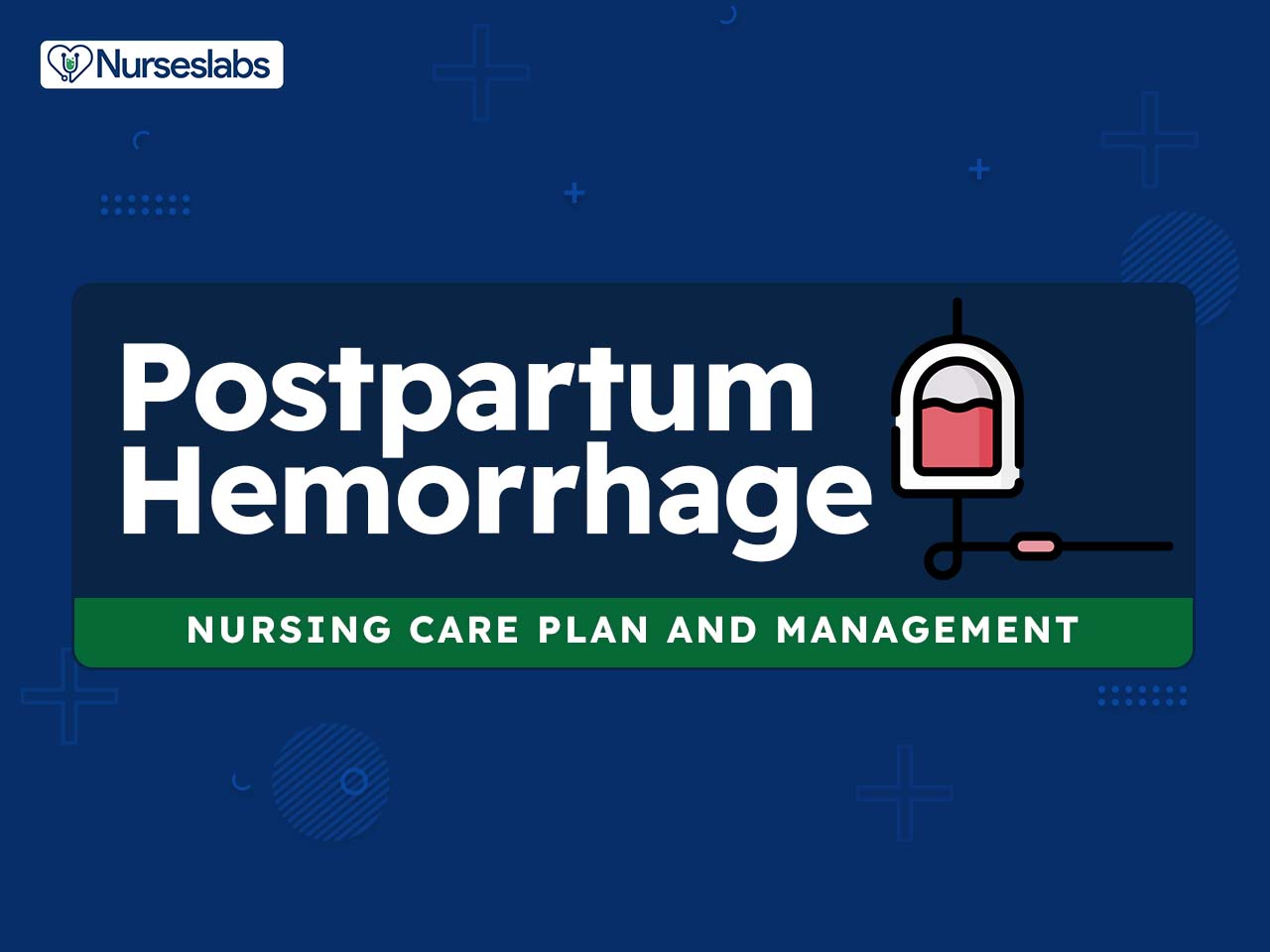
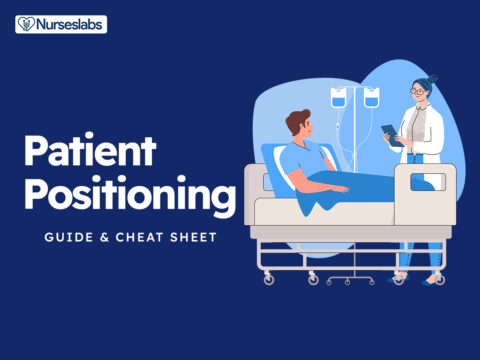

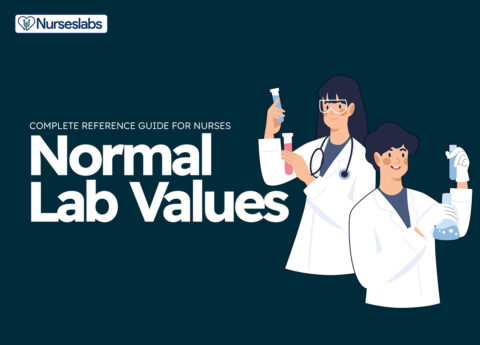





















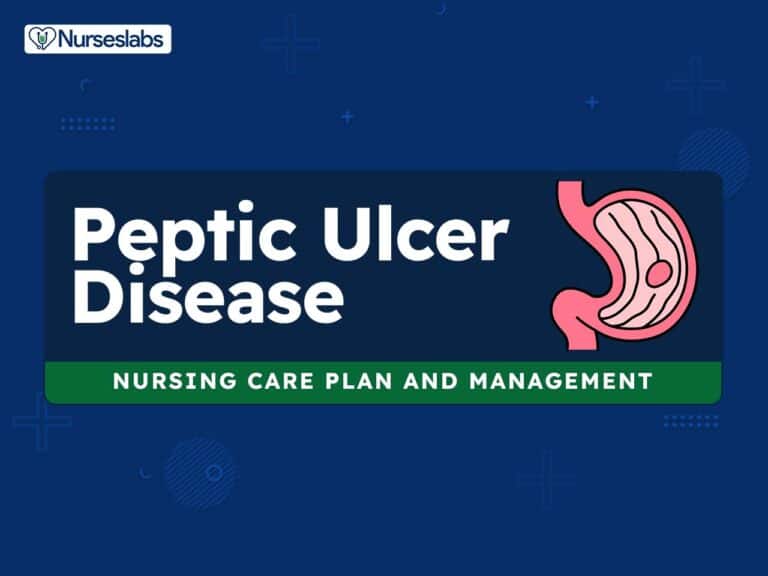
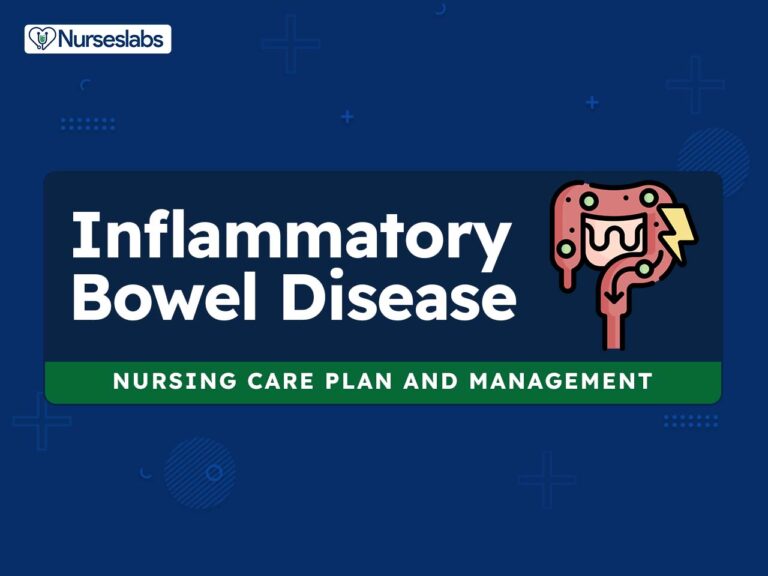
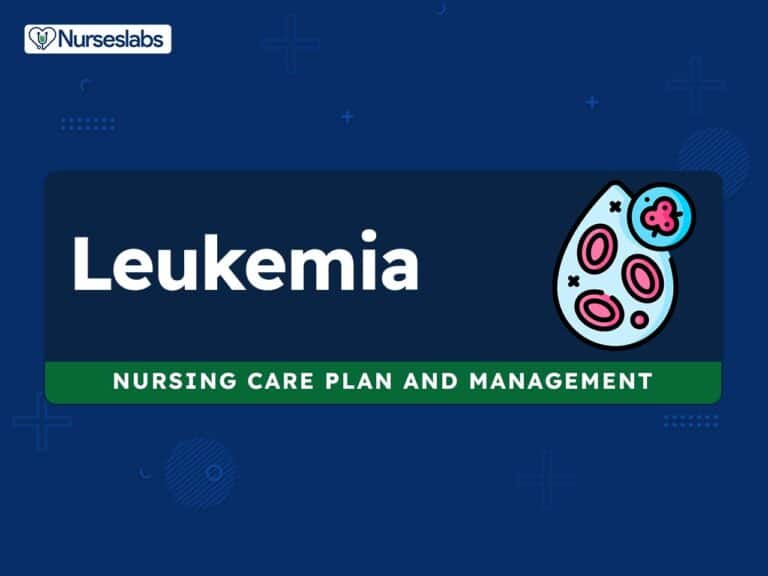




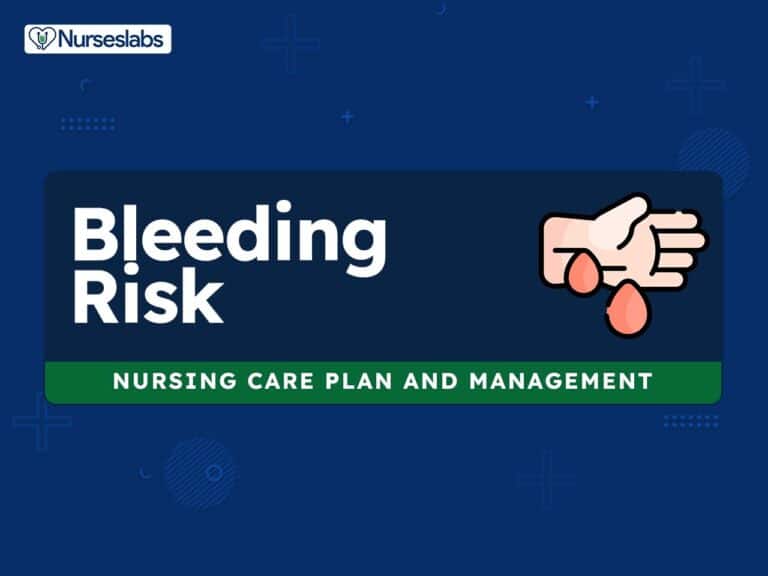
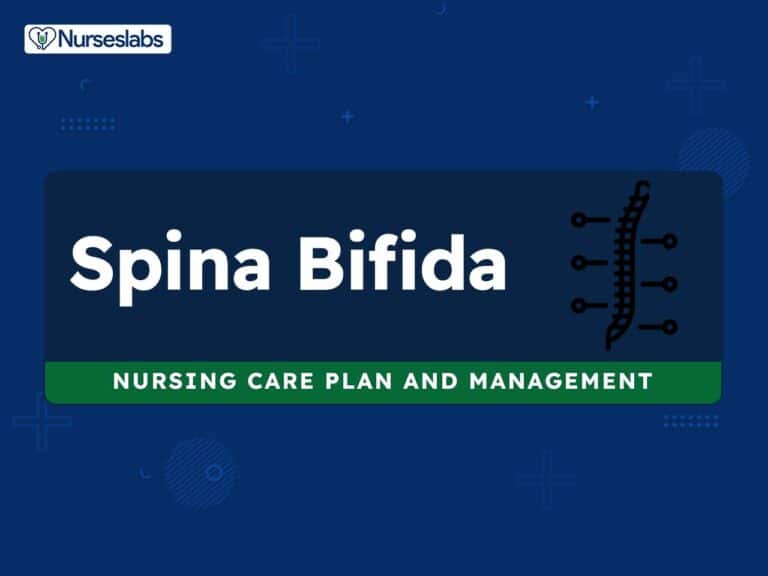

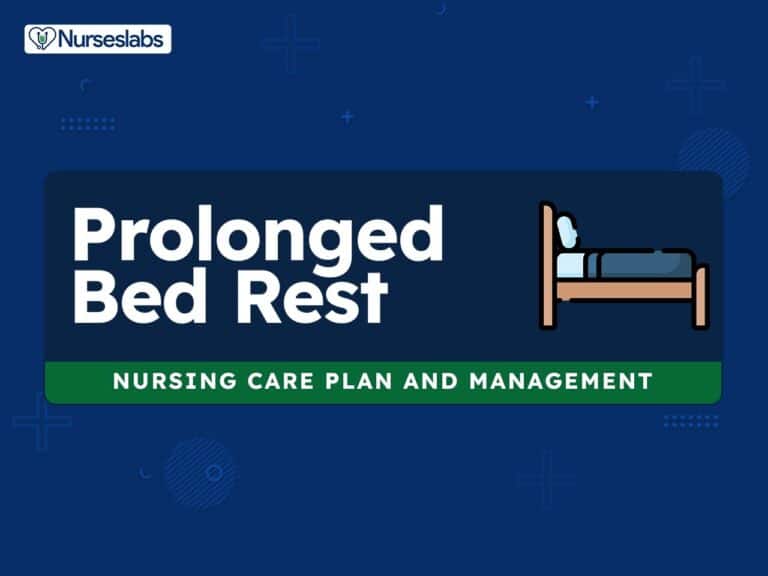
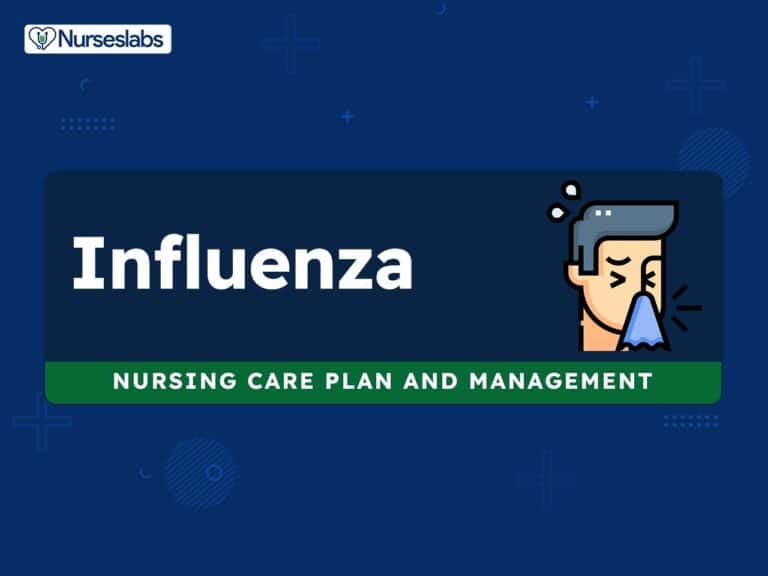
Leave a Comment